“Porsche: Adding Color to Life” — Interview Vol. 6 with TAD JUN JUN
公開日:2019.01.03
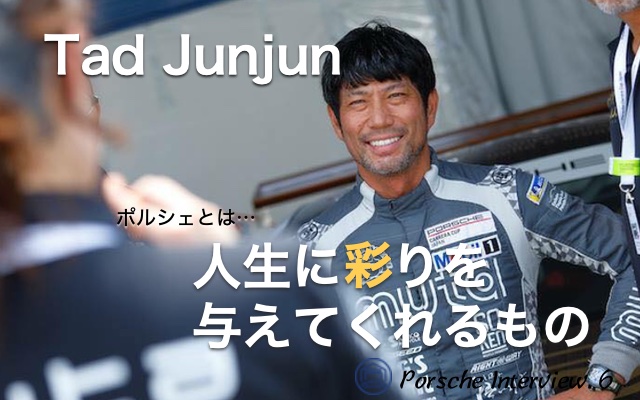
Hello everyone, this is Mina, the manager of the “Welcome Home, PORSCHE” blog. Today, I had the pleasure of speaking with “TAD JUN JUN,” a gentleman racer in the Porsche Carrera Cup Japan.
(1) Competing in PCCJ Since 2016
1. The Motivation Behind Joining PCCJ
—TAD, you’ve competed in PCCJ and stood on the podium. Have you always been a fan of racing?
Not exactly. It’s not so much that I love racing; it’s more that I simply love Porsche. That’s why I primarily only participate in PCCJ races. I’ve driven racing cars from other manufacturers, but that was purely practice for racing with Porsche.
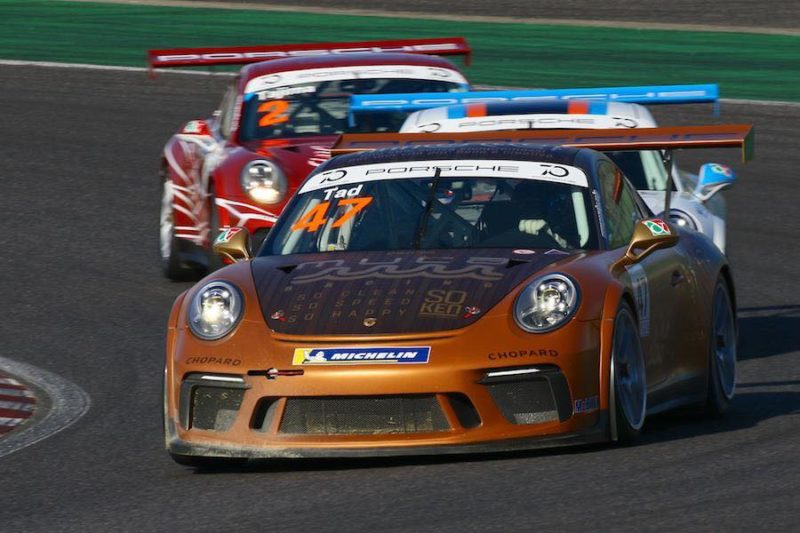
—What led you to start driving on circuits with a Porsche?
It was around 2006 or 2007. A Porsche-loving senior who I often relied on was participating in grassroots races with a Porsche and invited me to join. I drove a “993RS Club Sport” at the time, and initially, the feeling of “fear” outweighed the “fun.”
—How did you end up competing in PCCJ from there?
Modern Porsches are quite high-powered, so it’s impossible to unleash their full potential on public roads. That made me think, “I want to try driving on a circuit.”
Additionally, I believed that if I were to drive on a circuit, it would be better to do so in a racing car with higher safety features that protect the driver well, which led me to aim for PCCJ participation.
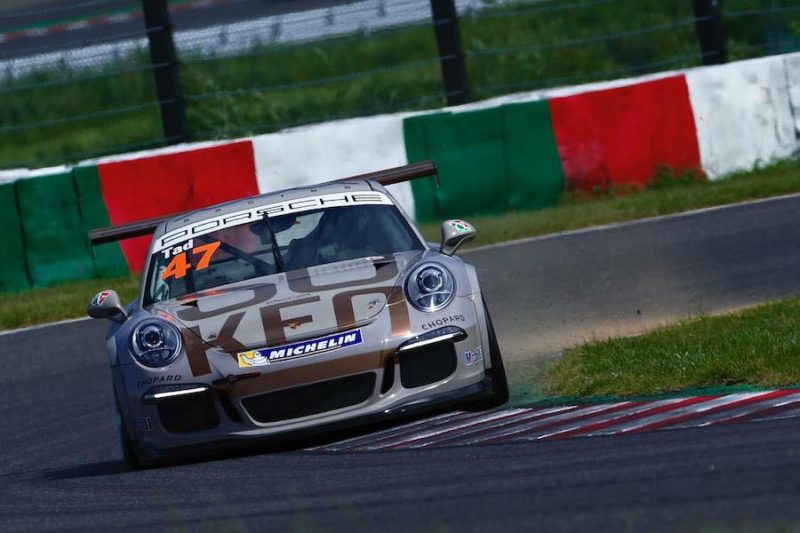
Moreover, with Porsche, the technology developed through racing cars is fed back into commercial vehicles, which also piqued my interest.
—Did you jump straight into the Carrera Cup?
No, I received a “997 Carrera Cup Car” from a senior PCCJ racer, asked a current GT driver to coach me, and started practicing on circuits around 2014. The following year, I participated in the Super Car Race Series paired with a GT driver. Through participating in races and receiving coaching from professionals, I spent about a year learning the rules of circuit racing and how to handle a race car.
2. The Depth and Thrill of Racing
—Do you remember your first PCCJ race?
Yes. In 2016, I competed in the gentleman class of PCCJ with a 991 Carrera Cup Car, and I realized something important.
“To win a race, you need to get used to driving a race car and get accustomed to racing itself.”
Winning or losing in a race is not just about “driving skill”; it is greatly influenced by mental condition and strategy. Therefore, those with more racing experience are stronger. At that time, I thought, “The reason why my senior T.T., who gave me the 997 Carrera Cup Car, is strong is also due to his high level of experience.”
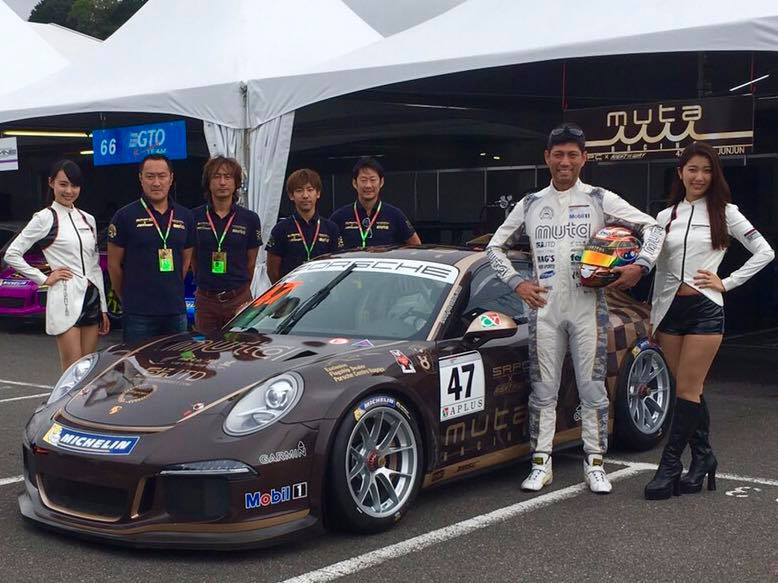
—So just being able to drive fast doesn’t guarantee a win?
Exactly. Even if you achieve the best time in qualifying, which is undoubtedly a testament to your skill, “achieving a high time in qualifying” and “winning the race” are completely different things.
Just because you have the fastest qualifying time doesn’t necessarily mean you’ll win the actual race.
—What makes racing so thrilling and enjoyable?
I think the motivation to “win” is what drives us. Racing is a world of winning and losing. Boys love competition from a young age, after all (laughs).
Moreover, racing is also a “battle with oneself.” While there’s a desire to “beat rivals,” even if you don’t make it to the podium, you can still feel a sense of growth and progress by realizing, “I cleared this in today’s race” or “I discovered this challenge to improve in the next race.” That’s one of the thrills of racing.
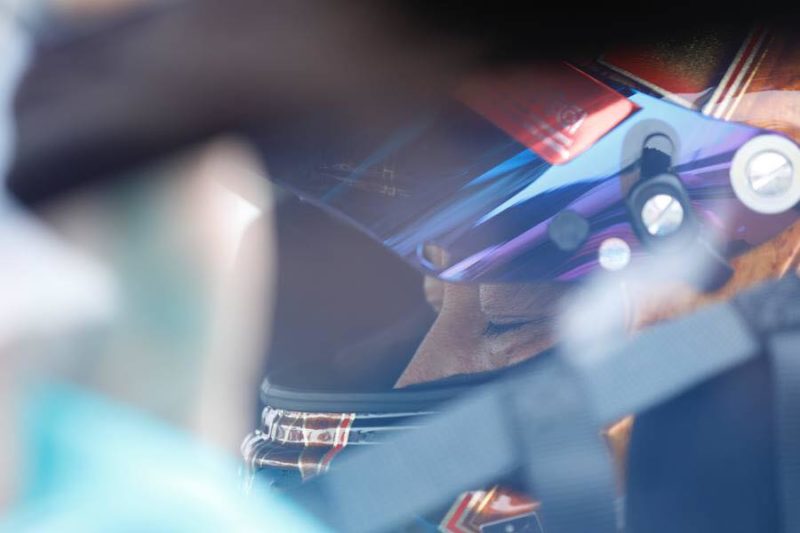
—Is that something unique to racing?
Yes, I think it’s something you can’t quite experience elsewhere. Many of the people who participate in races are company owners or top executives. Of course, there are opportunities to challenge oneself and feel growth in those roles, but as you reach a certain position, you often find yourself in environments where “your ideas are relatively easy to implement.”
However, that’s not the case in racing.
In the Carrera Cup Car, everyone is on equal footing with the same performance and weight. Winning under such conditions is not easy, and it requires a considerable amount of practice, a strong mentality, trust among teammates, and teamwork on the day of the race to finally stand on the podium.

When I first started participating in PCCJ, I thought, “It’s absolutely impossible for me to stand on the podium.” Winning a race seemed like an endlessly distant goal at that time.
Later, in the summer of 2017, I stood on the podium for the first time, and I had put in the corresponding effort. I felt a sense of “overcoming a wall.” The emotion of overcoming such a significant barrier and achieving a goal is priceless. It’s an experience that’s hard to come by elsewhere.
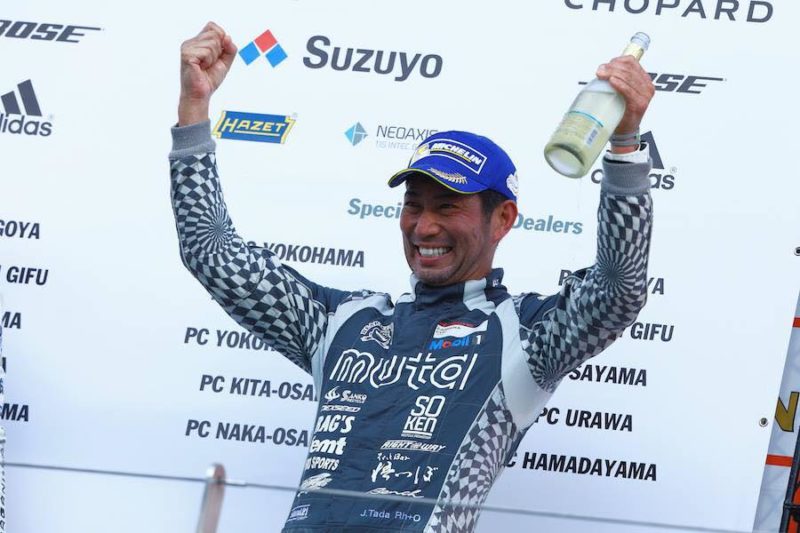
—I can see how that might be the case…
Indeed. While some might say, “It’s just a hobby, not like you’re making a living from racing,” the truth is, everyone is quite serious about it (laughs). Of course, everyone manages their main job properly, but…
At this age, especially physically, we tend to stop pushing ourselves. Even if we had that mindset when we were younger, as we age, we start to think, “Maybe it’s enough now.” However, to win in racing, “you need to train both mentally and physically, no matter your age.”
And I feel that what I’ve gained through these experiences is definitely being applied to my work and life.
3. The Key is Rivals’ Skills and Trust
—It’s impressive how you can push the limits like that…
The reason we can fight to the limit in races is that “the PCCJ drivers have high driving skills and there is trust among the drivers.”
On the circuit’s straights, we sometimes compete at speeds of 280 km/h, but if there were even one driver who “doesn’t hesitate to use any means to win” or “lacks the necessary skills,” it would be impossible to fight in extreme conditions.
The class we participate in is the “Gentleman Class,” and it’s precisely because everyone is a gentleman that we can compete wholeheartedly.
Also, a driver I know recently won an endurance race in a GT-R, but that’s because they have high technical skills and the capacity to compete like a gentleman. Normally, winning in a car you’re almost unfamiliar with is nearly impossible.
—The drivers are truly amazing…
We’re not professionals, and everyone has their main job, but we want to win if we’re going to do it. We’re all around the same age, so it’s truly a “clash of pride.”
In terms of qualifying times, several cars come in within a hundredth of a second. To put it more precisely, we’re competing down to a thousandth of a second.
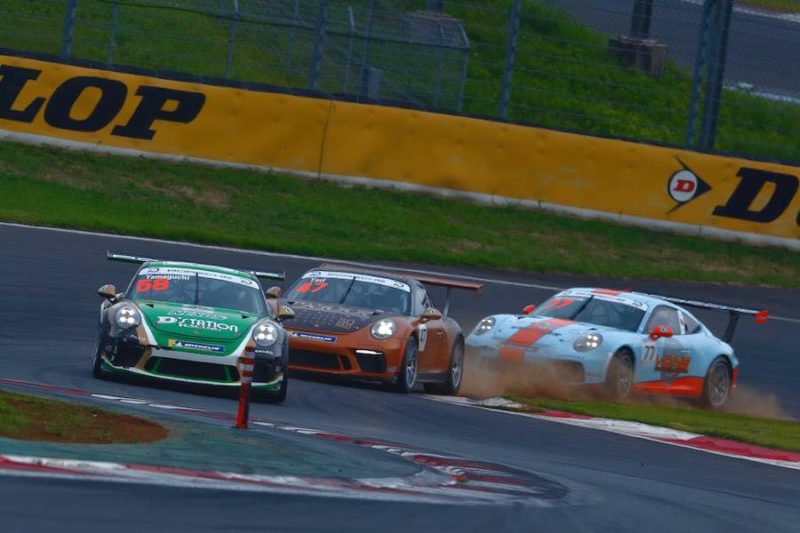
However, everyone understands firsthand “how difficult it is to stand on the podium,” so when another driver stands on the podium, we genuinely celebrate them. Even if I lose, I can honestly acknowledge that “the person who stood on the podium this time must have worked harder and put in more effort than I did.”
Therefore, the drivers are more like “comrades-in-arms” than rivals. Many of us develop deep personal relationships after racing together on the circuit.
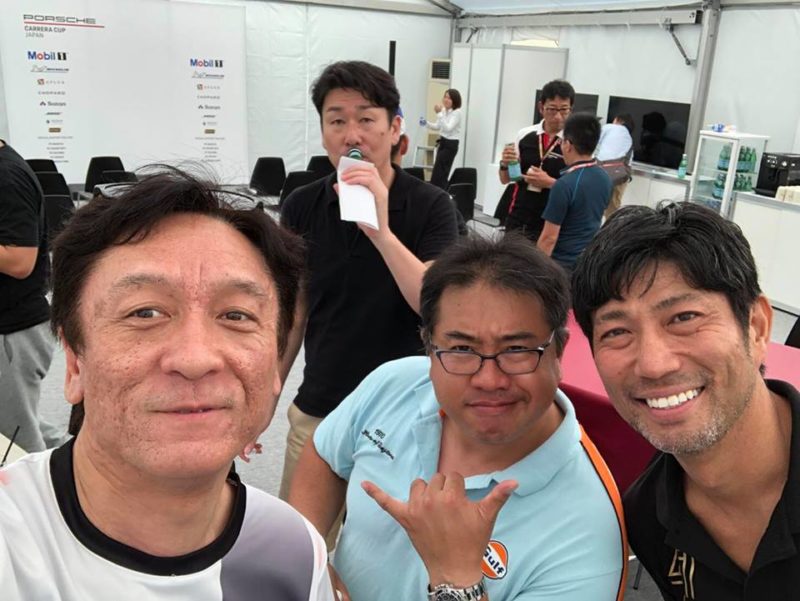
—What keeps you motivated to keep challenging yourself? Don’t you ever think, “This is enough…”?
The presence of other drivers is a significant part of my motivation. There are those older than me who achieve far better times, and some even surpass current GT drivers.
Seeing such people makes me think, “Age doesn’t matter. I can still push myself.”
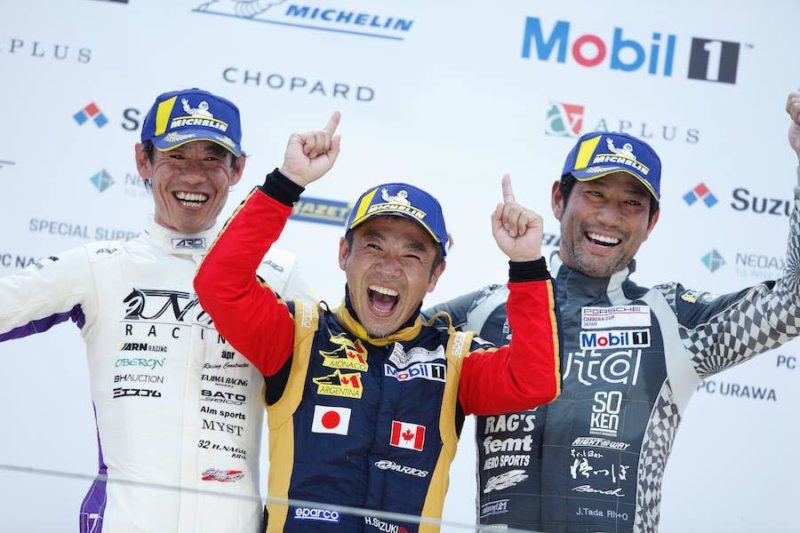
Also, Porsche is an incredibly high-performance car, so I always feel that the performance limit is far ahead. In other words, there’s still plenty of room for improvement.
Currently, the times in the gentleman class are quite close, but with effort, the times can still be reduced. We’re not professionals earning prize money from racing, and it might be considered a world of self-satisfaction, but… we’re fighting for our own honor.
(2) TAD and Porsche
1. The Moment of Being Captivated by Porsche
—What initially captivated you about Porsche, TAD?
The first time I ever rode in a Porsche was when I was about 25 or 26 years old. It was an air-cooled Porsche 911 “930 SC” with a 3-liter engine owned by a senior.
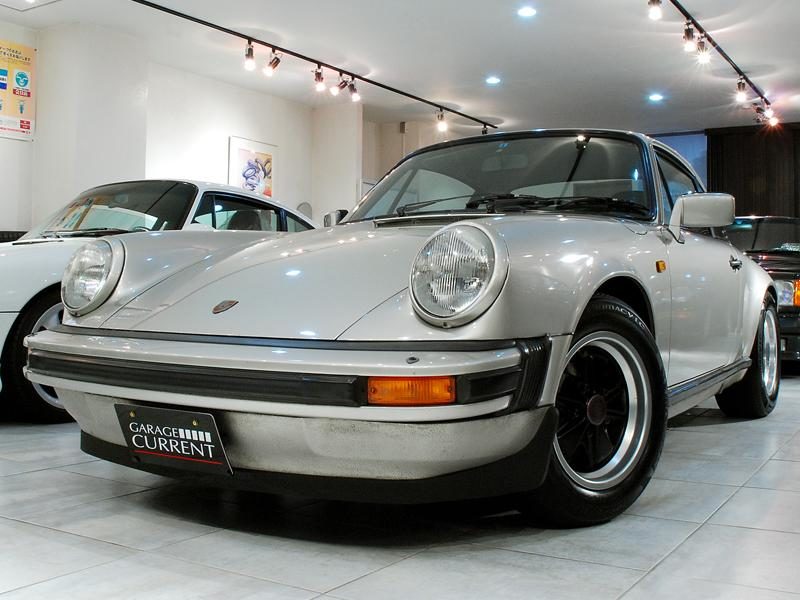
*Image source: GARAGE CURRENT Porsche 911 (Type 930 SC)
The senior asked, “Do you want to drive?” but at the time, I thought, “It’s unthinkable to drive a senior’s Porsche,” so I opted to ride in the passenger seat. As soon as we started driving, I was struck by a huge impact.
“This is completely different from any car I’ve ever been in!”
I was so moved that I decided then and there, “I will definitely buy a Porsche.”
—Being part of the supercar generation, did you always admire Porsche since childhood?
Yes, indeed. We are the generation right in the middle of the supercar boom. The desire to “one day buy the car of my dreams” was strong, and I think “cars held a significant weight in our lives” compared to today’s younger generation.
The car I admired the most back then was “Porsche.”
However, before I actually became an adult and bought a Porsche, I drove American 4WDs and Corvettes. To my 20-something self, Porsche seemed like a “lofty dream” and “something I could never afford.”
But as I mentioned earlier, after riding in my senior’s Porsche, I was so impressed by “this is what a sports car is…” that I decided, “I’m not just going to admire it; I’m definitely going to buy a Porsche!”
2. Enchanted by Air-Cooled Porsches
—With such a strong determination, what was the first Porsche you purchased?
Around 1998, I bought an air-cooled Porsche “993 Carrera S MT.” It was a nearly new used car, but the prices of air-cooled models weren’t as high as they are now. Still, for me in my 20s, it was a significant effort and a stretch to buy it.
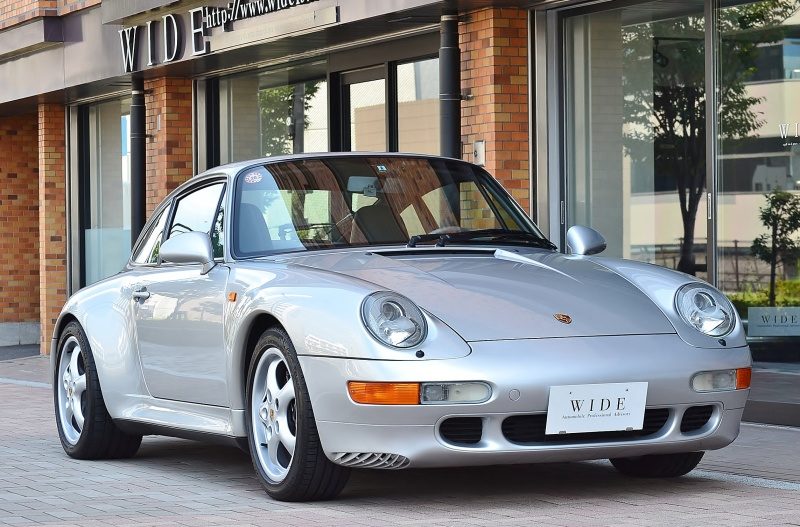
*Image source: Porsche 911 (Type 993) Carrera S
—Why did you choose the “993 Carrera S”?
It was just the right timing with the release of the 993, and it was “the last air-cooled model before switching to water-cooled, and it was an MT car,” so I felt I had to buy it then. The 993 Carrera S had a wide body and a turbo-look vibe… The body color was “Arctic Silver,” a special color used for the final air-cooled model.
People often say, “The clutch on air-cooled models is heavy,” but at the time, I didn’t feel that way and thought, “This is just how it is.” I drove this 993 on night highways and winding roads, exploring various places.
As time went on, the era shifted to “water-cooled,” and I ended up driving the 993 for two years before deciding to trade it in. It’s been said for a long time that “the latest Porsche is the best Porsche,” and I believed that too, so I never imagined the value of air-cooled MT cars would rise so much, and I sold it without much thought.
Looking back now, it was a waste (laughs).
—Is this where the “glorious Porsche history” begins…?
No, no… The next car I bought was the first water-cooled model, the “996 Turbo.” I think it was around 2001. However, after driving it for 2-3 years, I started longing for air-cooled again… I wanted to experience air-cooled once more, so I switched back to air-cooled.
—What did you purchase next?
In my early 30s, I switched to a “993RS Club Sport.” The “993RS Club Sport” is a somewhat rare car among air-cooled models, but at the time, it was still available on the used car market, and prices hadn’t skyrocketed yet.
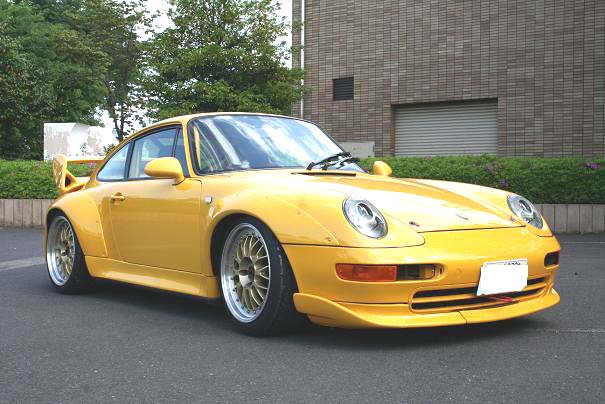
*Image source: ZEAL Pro 993RS Club Sport Tune = Zeal Pro =
After that, I purchased a linen gray metallic “930 Speedster.” I drove it for quite a while, and during that time, I became increasingly enamored with the “Speedster.”
—The 930 Speedster is impressive… What is it about air-cooled models that captivates you so much?
I’m not sure… (laughs). I think it’s the charm of analog things. For example, it’s similar to watches. Nowadays, digital watches and Apple Watches are widespread, but on the other hand, analog watches are also very popular.
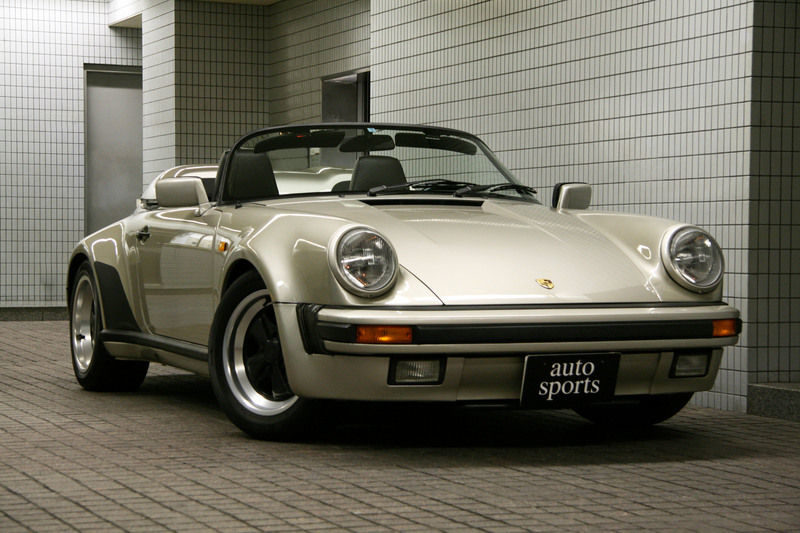
*Image source: Porsche 911 (Type 930) 930 Speedster Turbo-Look
I think the charm of air-cooled models is similar to that feeling.
Air-cooled cars have a very simple and analog structure. Additionally, the Speedster is an open car, so it even feels somewhat like riding a motorcycle.
Certainly, the latest water-cooled Porsches like the GT3 or GT2RS have incredible power and acceleration, but it’s impossible to unleash that performance on public roads.
In that sense, air-cooled models don’t reach such high speeds or have such incredible acceleration, but the joy of driving them is unparalleled. For city driving, air-cooled models are the best, and driving them is incredibly fun. I also quite like the distinctive air-cooled sound.
I believe the charm of analog things is timeless.
—Did you continue to be drawn into the world of air-cooled models after that?
Yes, that’s right (laughs). After that, I purchased a “964 Speedster MT” in Speed Yellow. I also bought a black metallic “964 3.6 Turbo.” The “964 3.6 Turbo” is known as an ultra-rare model among Porsches, but at the time, it was still available as a used car at Mitsuwa Motors.
Before I purchased it, a famous overseas racer came all the way to Mitsuwa Motors to buy it, but the owner said, “I won’t sell it to someone overseas. I want a Japanese person to drive it,” so they didn’t sell it. Hearing that, I immediately decided to buy it.
It was a one-owner, well-maintained, beautiful 911.
3. Porsche, Porsche, Porsche…
—You just can’t stop, can you…?
Well, yes… (laughs). After that, I started buying water-cooled models as well, like the 997 Turbo and the 970 Panamera. Regarding the Panamera, I started using it frequently for work, and I found it to be an excellent car, so I switched to the 971 Panamera Sport Turismo.
Later, I purchased a Carrera GT that a senior connected through Porsche was selling.
The Carrera GT is now hard to come by, and it’s such a great car that the previous owner still says, “I shouldn’t have let it go. I want to buy it back.” I continue to cherish and take great care of it.
After that, I acquired the 993GT2, which I had been searching for and desperately wanted. From there, I started buying the latest models like the 918 Spyder, 911R, and GT3RS.
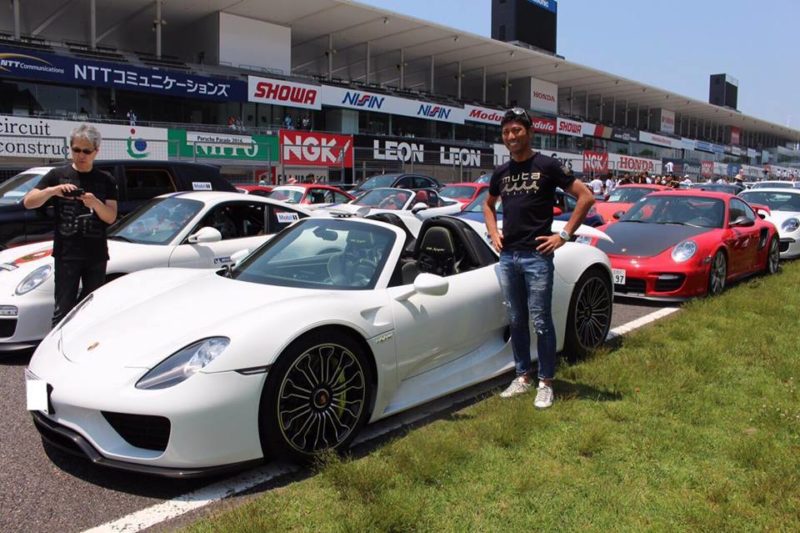
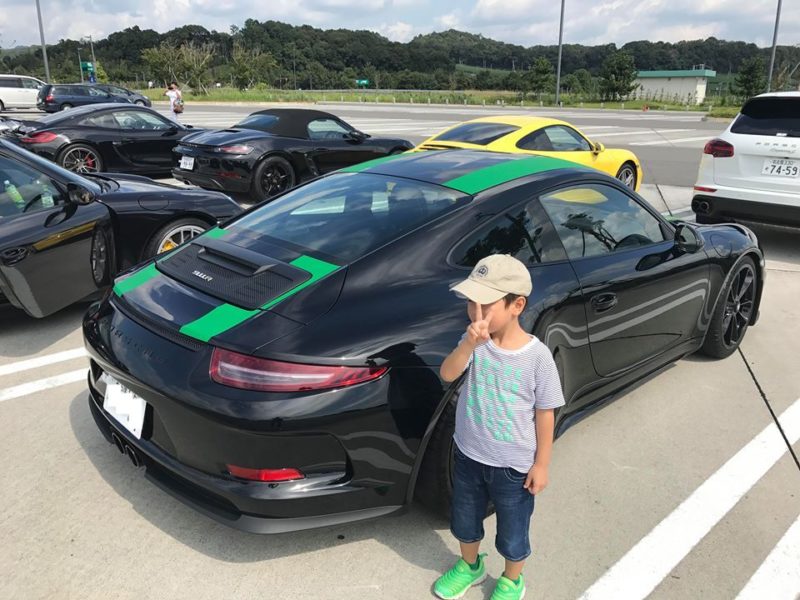
—Rare air-cooled models and the latest Porsches… I’m so envious
Around that time, I started wanting to “ride the 930 Speedster again.” About 10 years ago, during the Lehman Shock, when my company was also affected, my wife said, “You shouldn’t be driving a nice car when the company is struggling,” and I thought, “That’s true,” so I reluctantly let go of the “930 Speedster.”
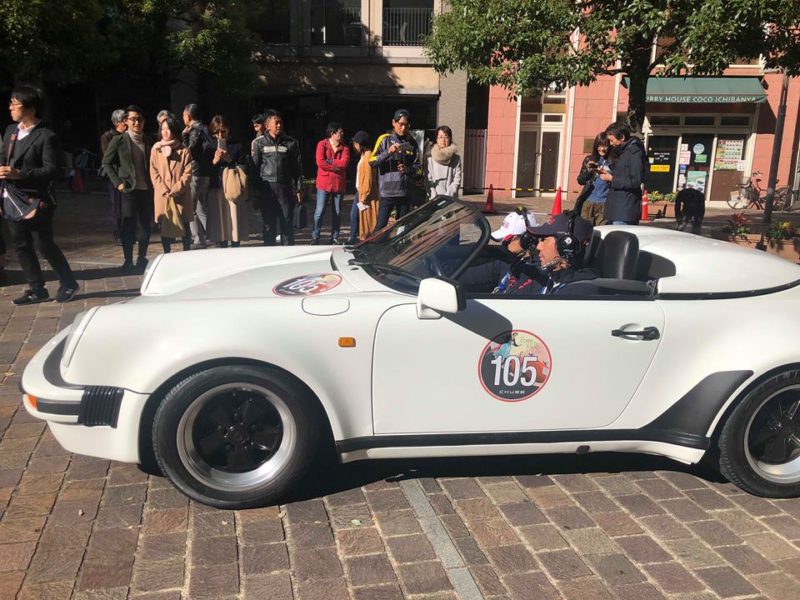
About three years ago, I found out that a white “930 Speedster” was up for sale and immediately purchased it. Later, I also bought a black “930 Speedster.”
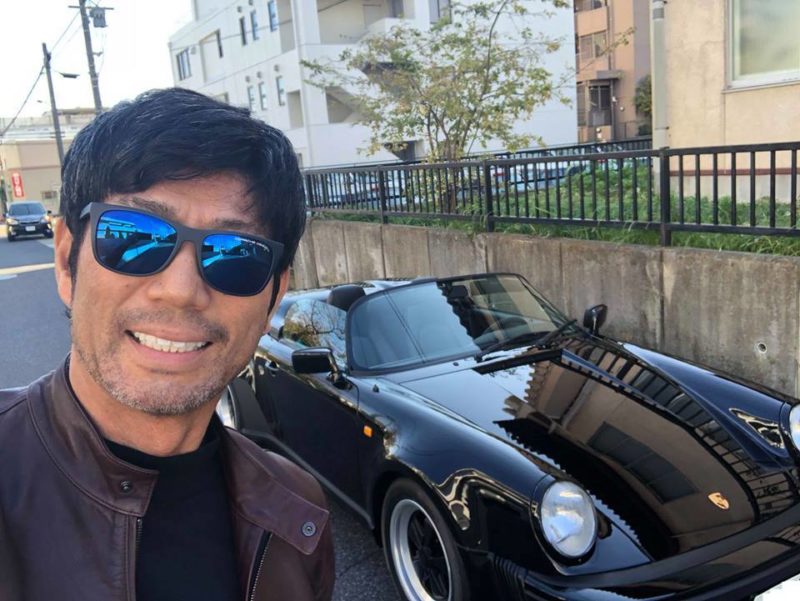
4. Participating in Mille Miglia with a 356 Speedster
—Amazing… So, what was the most recent Porsche you purchased?
A 1955 “356 Pre-A Speedster.” It’s an early model among Speedsters. I’ve always had a dream of “participating in the La Festa Mille Miglia (a rally event where classic cars drive 1,100 km starting from Harajuku).” While driving the latest Porsche on circuits and racing is fantastic, I also wanted to “participate in a rally with the ‘356,’ the origin of Porsche.”
However, to participate in such rallies, you need a classic car, but I couldn’t find the right one. Finally, three years ago, I came across a “356 Speedster” in Japan that was remarkably original.
Most 356 Speedsters have reproduction parts, but this 356 had almost all original parts, including the engine and transmission, making it very close to the original.
I thought, “I have to buy this.”
—How was your dream participation in Mille Miglia with the 356 Speedster?
It was an incredibly valuable and wonderful experience.
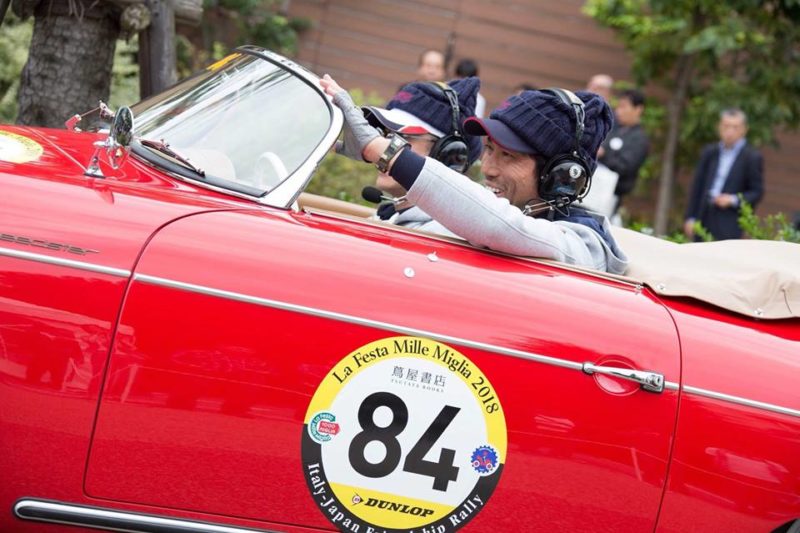
The 356 Speedster is currently being restored. In Yokohama, there’s a famous body shop run by a father and son who know a lot about the Porsche 356 from its release era, and they told me it would take “two years to restore.”
In return, they will overhaul everything, replate every single screw, and source and replace parts and bolts from around the world that even Porsche Japan doesn’t have, making it like new.
The president of this body shop is quite elderly, and he recently told me, “This will probably be my last big job.”
—With such a precious 356, won’t you keep it for display?
Well, many people might buy it and not drive it much, keeping it in an indoor garage for display. But I believe “such rare classic cars should be driven in public.”
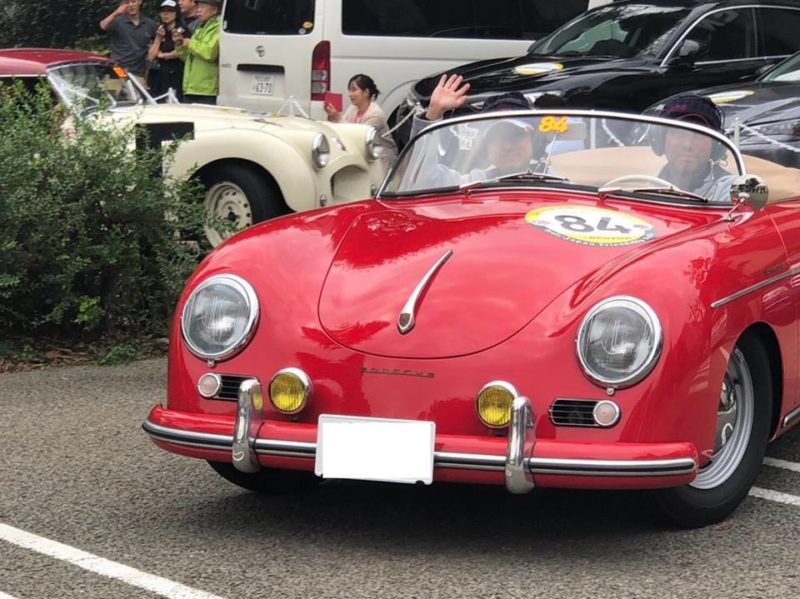
The 356 Speedster was made over 60 years ago, but it’s still a high-performance car that can drive on public roads. Its design is also wonderful. So, I think it’s more fitting to drive it and showcase it to the world.
Well, that’s just my personal opinion.
(3) The Splendor of Porsche
1. Racing and Porsche
—Have you rediscovered any aspects of Porsche’s greatness through racing?
Yes. Whether it’s the latest Carrera Cup Car or an air-cooled Porsche made 30 years ago, no matter which Porsche you sit in and grip the steering wheel, you feel, “Ah… this is a Porsche!” I think that’s an incredible thing.
Also, regarding the 911, “having the engine in the rear is a significant attraction.” A rear-engine sports car is usually unthinkable, but when you actually drive it on a circuit, you understand the “strength of the rear engine.”

Because the engine is in the rear, Porsche has a strong push from the back. As a result, “the acceleration after turning a corner and changing the car’s direction is very fast.” In Porsche race cars, it’s clear that the key to gaining time is the acceleration after a corner.
—I’ve heard that Porsche is durable and doesn’t break easily. Is that true?
Yes, it’s true. Porsche’s durability is impressive. When you race a car, it takes a beating, and you might damage the car once or twice in a season, but even so, Porsche tends to hold up well.
I’ve driven race cars from other manufacturers, and it’s completely different.
Additionally, Porsche is outstanding in terms of safety. I’ve experienced crashes during races, but I haven’t suffered any major injuries. In terms of safety features like brakes and body rigidity that protect the driver, Porsche is remarkable.
Porsche is meticulously and precisely crafted, making it an excellent industrial product. That’s why you can trust the car and race with confidence. And this applies not only to race cars but also to commercial vehicles.
—I’ve heard that with Porsche, “the break-in period is only over after 100,000 km.”
That’s right. When I drove the 964RS, I also owned sports cars from other manufacturers made in the same era, but they were completely different. In terms of performance, interior, and rigidity, Porsche was superior.
—However, I always feel it’s a shame that PCCJ has few spectators…
Well, yes (laughs). It’s usually not the main event but a support race for something else. It would be best if the Carrera Cup could be held at a venue where Porsche fans and owners gather.
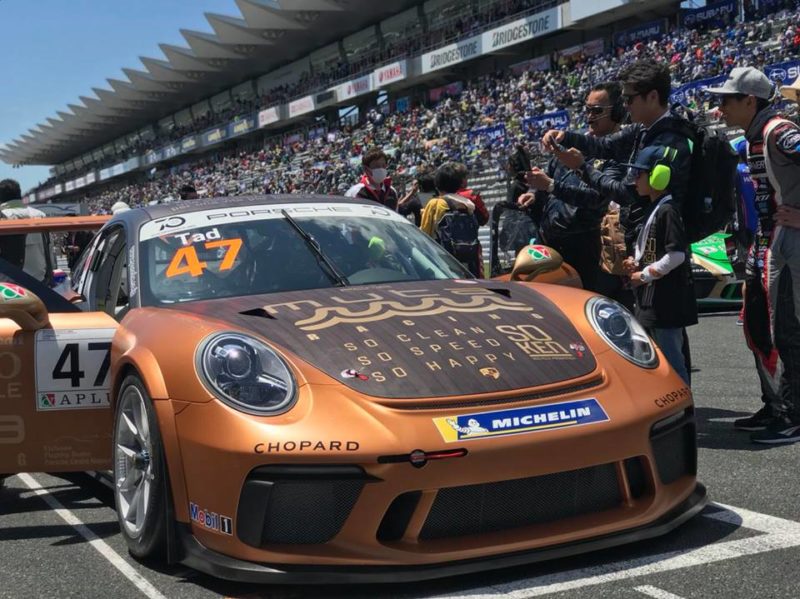
2. TAD’s Future
—Will you continue to participate in races, TAD?
Racing requires time and cost, so I’m not sure how long I can continue. Also, as humans, there are times when we feel “tired” or “want to take a break from racing.”
But in the end, I always return to racing… because there’s nothing else in my life that makes my heart race, moves me, and helps me grow like racing does.
Recently, I’ve also discovered the joy of driving classic cars, so I have a dream of one day participating in classic races worldwide, like Le Mans Classic, Mille Miglia overseas, or the Goodwood Festival, with my own Porsche.
Driving a 904 or 906 would be the ultimate dream…
Well, it’s not an immediate goal, but it’s my ultimate dream.
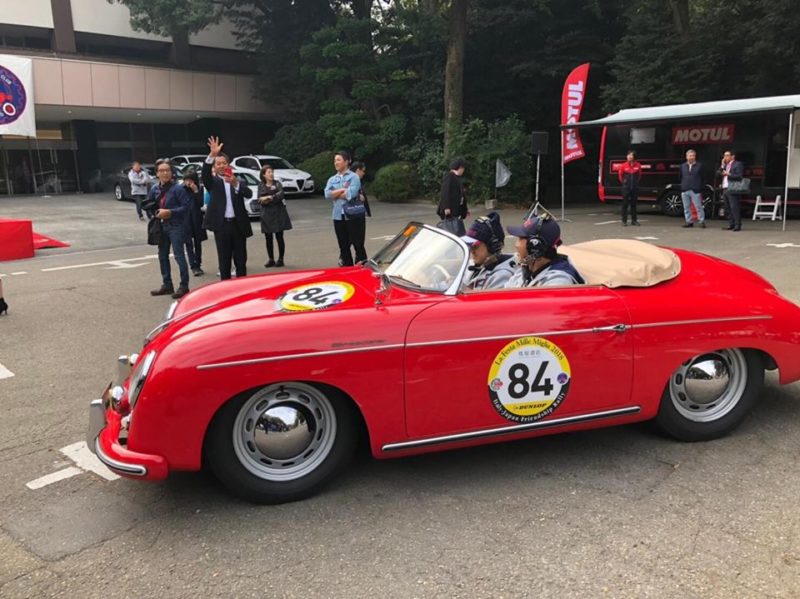
—Finally, what does Porsche mean to you, TAD?
To me, Porsche is… “something that adds color to life.” I think someone in PCCJ said this before, but when I say it, it sounds cheesy… (laughs)
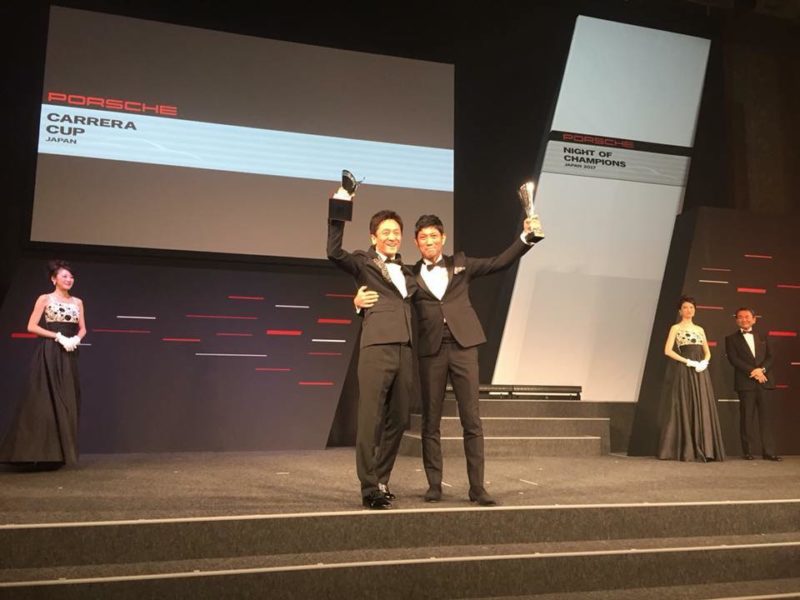
Porsche adds color to various aspects of life. Not just in racing, but also in city drives and touring… Having a Porsche broadens the range of experiences you can have in life.
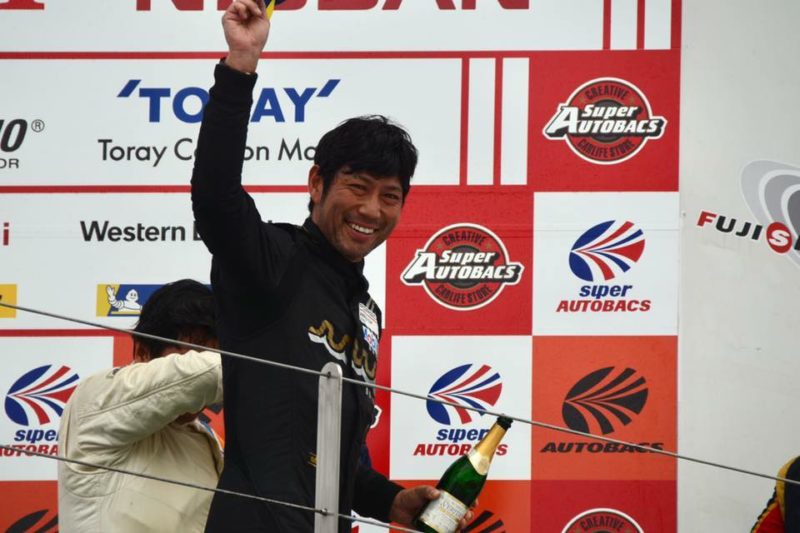
A few years ago, I lost my wife to cancer. The following year was my first time participating in the Carrera Cup, and I was very conflicted about whether to participate or not. I wondered, “Is this really the time for me to be doing this?”
However, during the difficult times of her illness, racing was the only thing that allowed me to escape from that pain, even if just for a moment. It was a significant source of solace.
From the outside, people might have thought, “What is he doing, playing around during such a tough time?” But it was because of racing that I was able to overcome it.
In that sense, Porsche is an irreplaceable part of my life. I intend to keep striving towards my ultimate dream, not just in racing but in all aspects of life.
[Blog Manager’s Thoughts]
This was my first time hearing from someone who knows so much about Porsche, from race cars to air-cooled Porsches, the 356, and water-cooled Porsches. The conversation was incredibly persuasive, profound, and moving. The phrase “Porsche adds color to life” is something that many Porsche fans can surely relate to. Thank you so much, TAD, for sharing your story with us!
このブログが気に入ったらフォローしてね!


Comment ( 0 )
Trackbacks are closed.
No comments yet.